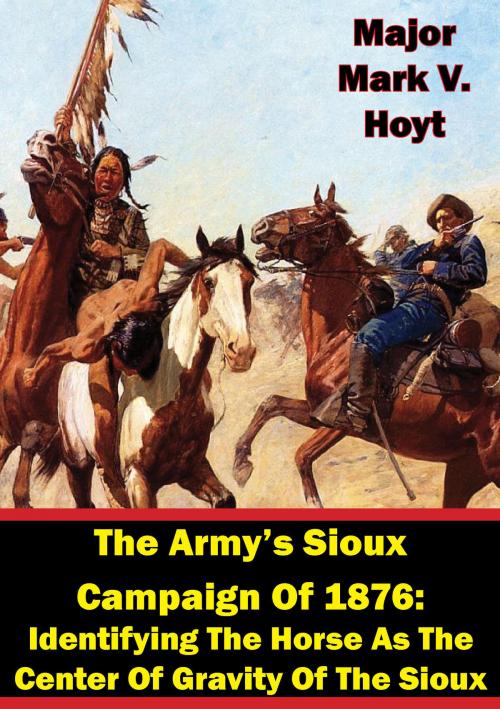The Army’s Sioux Campaign of 1876
Identifying the Horse as the Center of Gravity of the Sioux
Nonfiction, Social & Cultural Studies, Social Science, Cultural Studies, Native American Studies, History, Americas, United States, 19th Century, Biography & Memoir| Author: | Major Mark V. Hoyt | ISBN: | 9781786251589 |
| Publisher: | Normanby Press | Publication: | November 6, 2015 |
| Imprint: | Normanby Press | Language: | English |
| Author: | Major Mark V. Hoyt |
| ISBN: | 9781786251589 |
| Publisher: | Normanby Press |
| Publication: | November 6, 2015 |
| Imprint: | Normanby Press |
| Language: | English |
During the first half of 1876 the Army conducted three expeditions against the Sioux and Cheyenne Indians. The results of these three expeditions were: the first expedition destroying a small village, the second expedition being defeated in a meeting engagement, and the third expedition suffering the annihilation of five companies. The results lead to questioning the Army’s focus on attacking and destroying villages as the primary target of their expeditions. If the Army had a complete understanding of the Sioux they would have realized that the “hub of all power” or center of gravity of the Sioux was the horse, which every major aspect of Sioux life was augmented and dependent upon. The first three expeditions of the Sioux Campaign of 1876 demonstrate that: senior Army commanders planned their campaigns, expeditions, and organizations around their knowledge of Sioux mobility, the primary source of power for the Sioux warrior was mobility gained from the horse, Army forces could not bring their advantage in firepower to bear on Sioux warriors. Army commanders understood the mobility of the Sioux village and their warriors, but they failed to take the next step—challenging the old assumption that attacking villages and using a strategy of exhaustion was the correct way to subdue the Sioux. Instead, Army forces should have concentrated their attacks on center of gravity of the Sioux—the horse.
During the first half of 1876 the Army conducted three expeditions against the Sioux and Cheyenne Indians. The results of these three expeditions were: the first expedition destroying a small village, the second expedition being defeated in a meeting engagement, and the third expedition suffering the annihilation of five companies. The results lead to questioning the Army’s focus on attacking and destroying villages as the primary target of their expeditions. If the Army had a complete understanding of the Sioux they would have realized that the “hub of all power” or center of gravity of the Sioux was the horse, which every major aspect of Sioux life was augmented and dependent upon. The first three expeditions of the Sioux Campaign of 1876 demonstrate that: senior Army commanders planned their campaigns, expeditions, and organizations around their knowledge of Sioux mobility, the primary source of power for the Sioux warrior was mobility gained from the horse, Army forces could not bring their advantage in firepower to bear on Sioux warriors. Army commanders understood the mobility of the Sioux village and their warriors, but they failed to take the next step—challenging the old assumption that attacking villages and using a strategy of exhaustion was the correct way to subdue the Sioux. Instead, Army forces should have concentrated their attacks on center of gravity of the Sioux—the horse.



![Cover of the book The Invasion of the Crimea: Vol. VII [Sixth Edition] by Major Mark V. Hoyt](https://www.kuoky.com/images/2017/january/300x300/9781787203495-t7t0_300x.jpg)

![Cover of the book FIRE BRIGADE: U.S. Marines In The Pusan Perimeter [Illustrated Edition] by Major Mark V. Hoyt](https://www.kuoky.com/images/2015/november/300x300/9781786251619-wyoa_300x.jpg)
![Cover of the book History Of The Indian Mutiny Of 1857-8 – Vol. VI [Illustrated Edition] by Major Mark V. Hoyt](https://www.kuoky.com/images/2014/june/300x300/9781782892120-v6PR_300x.jpg)

![Cover of the book Lord Roberts Of Kandahar, V.C.: The Life-Story Of A Great Solider [Illustrated Edition] by Major Mark V. Hoyt](https://www.kuoky.com/images/2015/november/300x300/9781786251633-mU31_300x.jpg)






